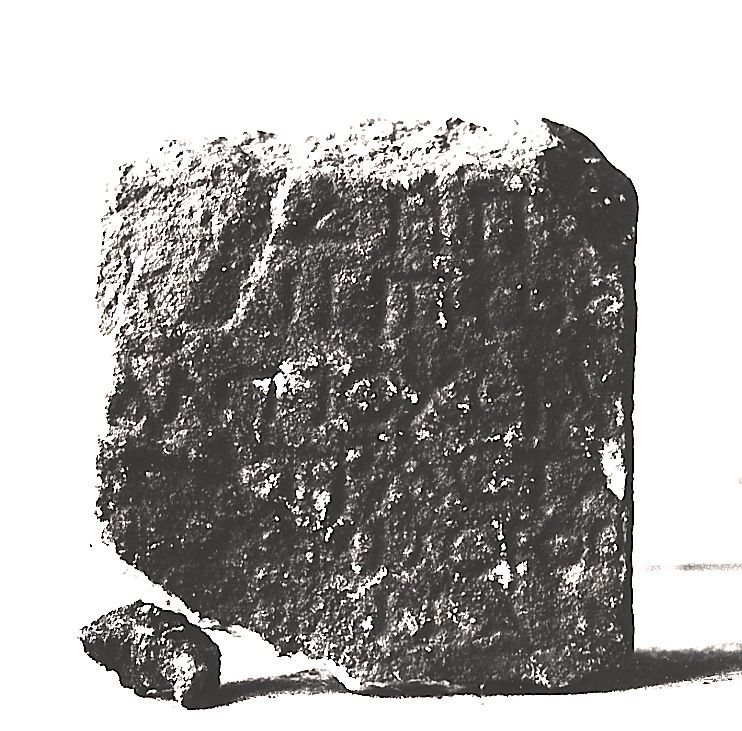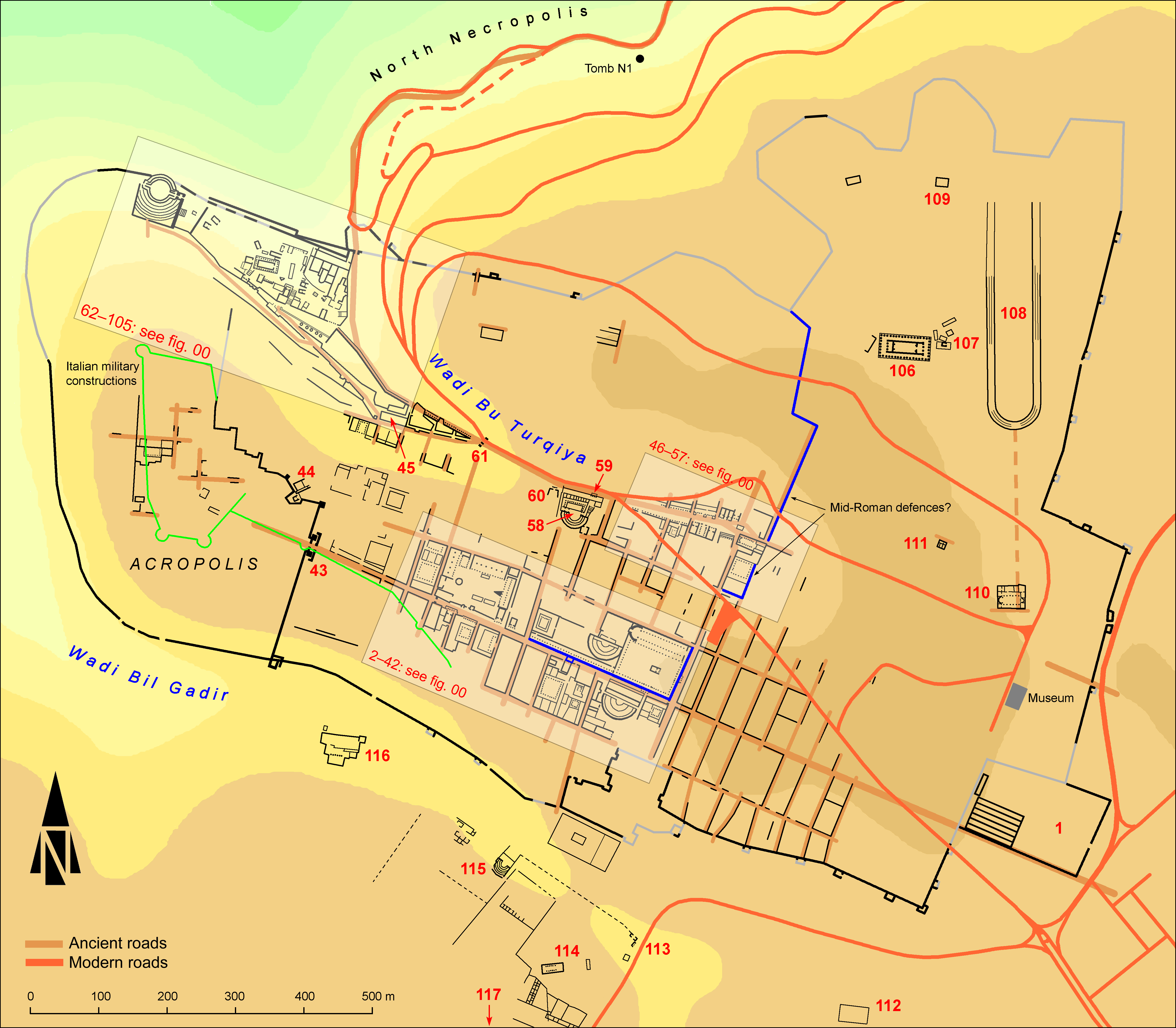EpiDoc XML:
GVCyr0442
Trismegistos ID:
105894
Source description
Support: Small fragment of a marble block broken off everywhere but on the right edge (w: 0.125 × h: 0.145).
Layout: Inscribed on the front surface, which was much weathered at the time of discovery.
Letters: Average 0.012, deeply and fairly well cut. Irregular height of letters; alpha with dropped bar, flattened delta, lunate epsilon, sigma and omega, pi with equal hastae.
Date: Perhaps second century AD (lettering).
Findspot: Bought by the Norton mission from an Arab on February 16th, 1911 at Cyrene ➚: exact findspot unknown.
Place of origin: Possibly Cyrene ➚: exact findspot unrecorded.
Last recorded location: Seen by H. De Cou between the date of purchase and his own death on March 11st, 1911 at Shahat. Seems to be lost.
Text constituted from: Transcription from previous editor (JMR and CDL).
Bibliography
Robinson 1913, n. 9 with fig. 8, whence Sammelbuch 5872; GVCyr 044 ➚.
Text
Apparatus
1: ΔΗΠ+: ΔΗΠΙ Robinson 1913
2: μ̣ήπως: ΝΗΠΩΣ Robinson 1913
4: [θύγ?]ατρας τα: ΑΤΡΑΣΤΑ Robinson 1913
5: [δύσ?]μορος J.M. Reynolds' suggestion: [---]μορος Robinson 1913
French translation
[---] pas encore [---] Antiokheia [---] les filles [---] infortuné(e) [---].
English translation
[---] not yet [---] Antiocheia [---] the daughters [---] ill-fated [---].
Italian translation
[---] non ancora [---] Antiocheia [---] le figlie [---] sventurata/o [---].
Commentary
We follow J.M. Reynolds for the suggested date.
This very fragmentary inscription has been included into the verse collection on behalf of only two tiny hints: the plausible δύσμορος at line 5 (or another compound with the same second stem) and the probable word for 'daughter' in its epic form of acc. pl. θύγατρας. This form, attested only three times in Homer, is always at the end of the verse, as all other forms in θυγατρ-. This allows to determine here the end of a verse.
Another problematic aspect is the name Ἀντιόχεια. It may as well be the name of the city as such or used as a woman's personal name. We choose arbitrarily the second option. Anyway, the mention of women is statistically more frequent in funerary inscriptions and the good rhythmical conformity of the name makes the guess of a metrical epitaph a little more plausible.
Metrical analysis: dactylic fragments which it is impossible to connect with a specific verse or place in the verse, but for one case mentioned above. At least, it is clear that the layout of lines on the stone was not consistent with the ends of verses.
CC BY-NC-SA 4.0 Deed Attribution-NonCommercial-ShareAlike 4.0 International License.
All citation, reuse or distribution of this work must contain a link back to DOI: https://doi.org/10.60760/unibo/igcyrgvcyr2 and the filename (IGCyr000000 or GVCyr000), as well as the year of consultation.

